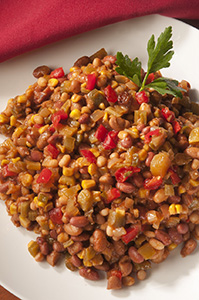McCormick Flavor Forecast Reveals Eight Trends for 2015
Wednesday, 10 December 2014 03:00
 15th-annual report highlights top tastes driving the future of flavor and menu innovation.
15th-annual report highlights top tastes driving the future of flavor and menu innovation.
Sparks, Md.-based McCormick & Company releases its McCormick® Flavor Forecast® 2015, highlighting eight enticing trends that will shape the future of flavor. Now in its 15th year, the much-anticipated report drives flavor innovation and exploration throughout the food industry and in professional kitchens everywhere.
Reflecting the rapidly increasing demand for bolder, more intense flavor experiences, the McCormick Flavor Forecast 2015 pinpoints adventurous global tastes on the rise. The report also showcases new ways to elevate pantry essentials to starring roles.

 AI Pittsburgh instructor Culp helped Culinary Team USA place third overall in Luxembourg, while U.S. chef-educators in individual competition represented their nation well.
AI Pittsburgh instructor Culp helped Culinary Team USA place third overall in Luxembourg, while U.S. chef-educators in individual competition represented their nation well. Vegetarianism—and its many variations—is a way of life for a growing number of Americans. Students, thus, should learn to prepare vegetarian and vegan dishes that entice and excite even those customers who enjoy meat. To that end, Chef Zonka shares her first-week lesson plan in a vegetarian-cuisine course.
Vegetarianism—and its many variations—is a way of life for a growing number of Americans. Students, thus, should learn to prepare vegetarian and vegan dishes that entice and excite even those customers who enjoy meat. To that end, Chef Zonka shares her first-week lesson plan in a vegetarian-cuisine course.